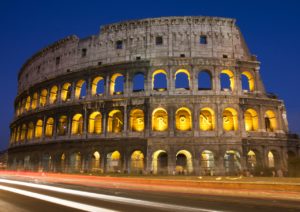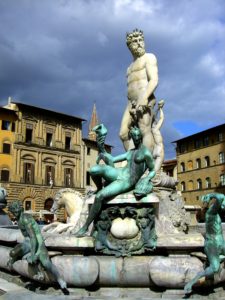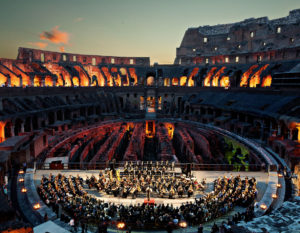Luxury brands latch on to the cause of heritage conservation in their home countries. Even as they put in the much needed money to restore their splendor, luxury brands also drive home their heritage and country of origin, which are much valued in the world of true luxury.
Colosseum, Rome
In Italy, a heritage revolution of sorts is underway.
Heritage luxury brands have taken up the cause of heritage monuments that are showing signs of age, built as they were in the ancient world. Italian footwear label Salvatore Ferragamo, for instance, has taken over the restoration of the Fountain of Neptune to its original splendor in its hometown of Florence.
The Fountain of Neptune, located outside the Palazzo Vecchio in the Piazza della Signoria, quite close to Ferragamo’s headquarters. Commissioned in 1565 by Cosimo I de’Medici and sculpted by Bartolomeo Ammannati, the fountain once reflected Florence’s sea prowess during the Renaissance era, and was the city’s first public fountain. Ferragamo has donated 1.5 million euros, or $1.6 million to the project, which will be carried over the course of a three-year period. Ferragamo’s contribution is part of the government’s Art Bonus program, which encourages corporate funding of art and culture restoration projects. Under the program, donors are offered tax breaks designed to encourage private donations for the preservation and restoration of museums, libraries, archives, and theaters. The tax deduction allows donors to receive a credit of 65 percent of their contribution over three years.
Fountain of Neptune
“I like to think our support to Florence’s cultural activities and the restoration of architectural assets as a virtuous partnership between the public and the private sectors and as a way for our family to thank the city and recognize the close bond forged by my father and still in place today,” said Ferruccio Ferragamo, chairman of Salvatore Ferragamo, in a statement.
And Ferragamo isn’t the only brand to do so. Italian fashion houses have decided to take up the cause of their heritage, putting their financial might behind preserving a culture they draw so much from. Tod’s, Bulgari and several others have stepped up to help restore their country’s landmarks, as the government has fallen on tough economic times leaving it unable to finance such large-scale restorations.
Tod’s concert at Colosseum
Tod’s has taken over the refurbishment of Colosseum, a €25 million ($34 million) project, while Fendi is spending $4 million in the restoration of the Trevi Fountain, and Bulgari has pledged $2 million to restore the Spanish Steps. According to Italy’s culture minister, Dario Franceschini, Italian heritage offers endless options, from small countryside churches to the Colosseum, which need to be restored.
Fendi has already held a fashion show on a transparent runway over the Trevi Fountain. Tod’s CEO Diego Della Valle says that the brand’s donation was money well-spent. “I’m a very proud Italian and we have immense love for Italian heritage.” A founder of the University of Hong Kong’s architectural conservation programmes, Professor Lynne DiStefano, welcomes such collaborations.
These collaboration, says luxury industry analyst Diego Burnett, is a perfect way for brands to market themselves. “In a world that is more interested in luxury that is authentic, rooted and experiential, it makes sense for brands to take up projects that will reinforce their roots and convey the message that they are heritage brands.”
Paolo Uccello Clock in Florence
For instance, Panerai’s effort to restore the Paolo Uccello Clock in Florence’s Duomo is closely linked to the label’s local roots and watch-making tradition. “Florence is the international centre of Panerai’s communications, and we are very keen to do things for the city, because when we communicate, we communicate values [that] not many brands have,” says Panerai CEO Angelo Bonati.
There have been critics, of course, who say, that heritage cannot be allowed to be used as marketing tools for luxury brands. But, with governments that are desperately broke, it is unlikely that such protest will cut much ice.






